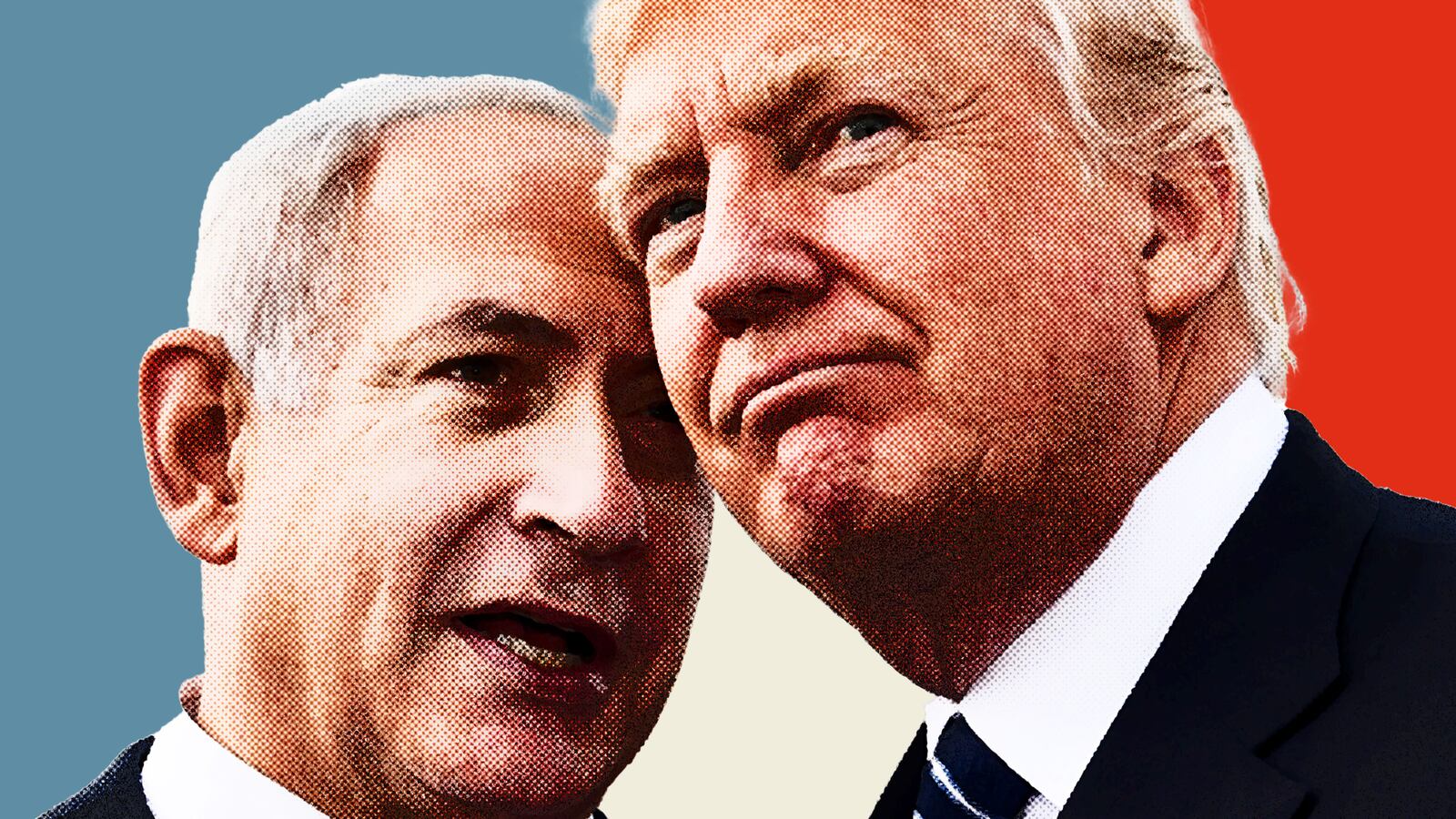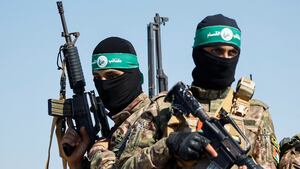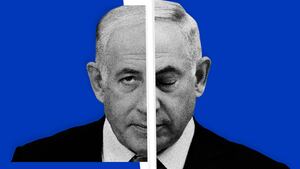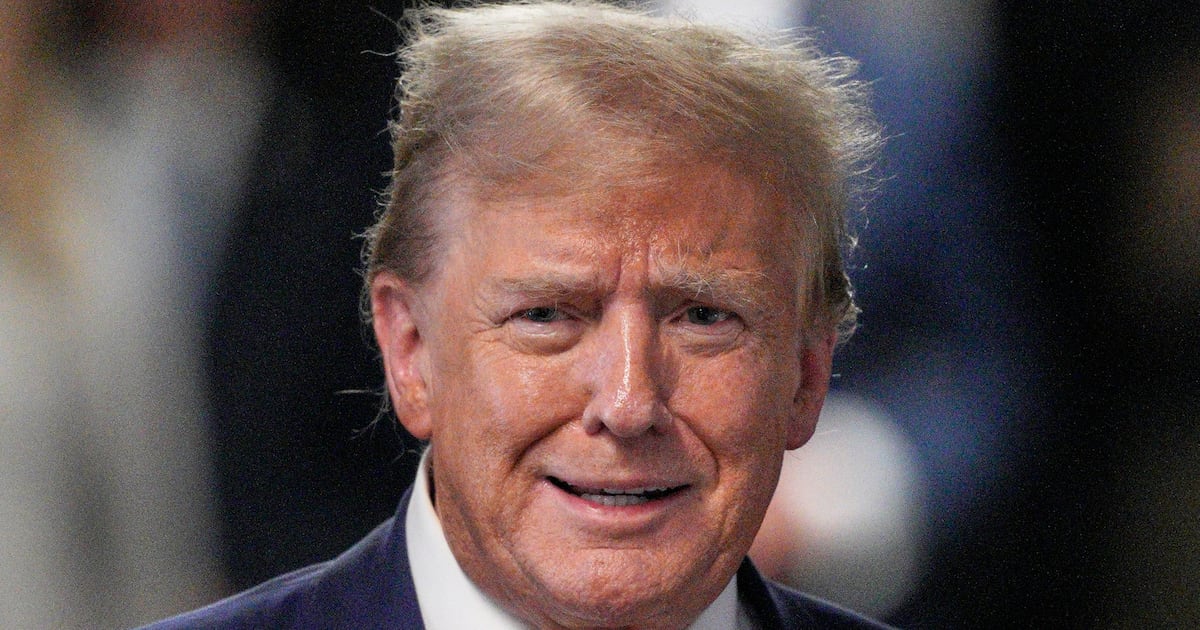No American president caused Hamas’ surprise assault across the Gaza border that killed over 900 Israelis—mostly in deliberate, brutal attacks on civilians, including 260 at a music festival—and kidnapping about 150 more. But U.S. policy, especially the Trump administration’s, contributed to the unsustainable situation that made an outbreak of violence more likely.
Claims that “Trump brought peace to the Middle East” are almost an inversion of reality.
He shifted U.S. policy fully in Israel’s favor—reducing support for the Palestinians and treating their quest for statehood as something that could be ignored—and shaped the regional context by heightening confrontation with Iran without strategic benefit.
Ignoring the Big Problem
Let’s start with Trump’s relatively most positive contribution, the Abraham Accords. That deal normalized relations between Israel, Bahrain, and the United Arab Emirates (UAE), opening flights that sent tourists to each other for the first time.
All three of those countries are small, wealthy American partners that oppose Iran, making an agreement easier. Bahrain hosts the U.S. Navy’s Central Command and the Fifth Fleet. The Trump administration greased the skids with the UAE by authorizing F-35 fighter jet and Reaper drone sales, making them the only country in the Middle East besides Israel with advanced stealth aircraft.
But whatever you think of that price, more peace is a positive development and could provide a stepping stone for a wider Arab-Israeli deal, as the Biden administration has been attempting with Saudi Arabia.
But lying about the Abraham Accords, stretching them into “the dawn of a new Middle East,” and playing them up for an American domestic audience was emblematic of Trump’s larger failure. He threw America’s weight behind Israeli Prime Minister Benjamin Netanyahu’s squeeze-and-ignore approach to the Palestinians as if the fundamental problem of people displaced and living under occupation would just go away.
Trump officially recognized Jerusalem as Israel’s capital and moved the U.S. embassy there, breaking American policy since the 1979 Camp David Accords that treated the city as disputed, given Palestinian claims to a capital in East Jerusalem. Trump cut $25 million in U.S. support for Palestinian hospitals, and $200 million from the UN Relief and Works Agency, which has helped displaced Palestinians and their descendants since 1949. In early 2020, Trump’s son-in-law and White House adviser Jared Kushner put out a “peace plan” that mostly just proposed giving Israel what it wants and dismissing Palestinian concerns.
Meanwhile, Israel expanded settlements in the West Bank, along with the corresponding military/policing presence that defends settlers from violence (including when the settlers commit some). On the other half of the Palestinian territories, Israel kept Gaza under blockade and fought occasional wars with Hamas. The Israeli government moved further and further right, pursuing West Bank annexation, and the two-state solution, which was never that plausible to begin with, became more and more a pipe dream.
That describes the last decade and a half, since Hamas forcibly took control of Gaza in 2007. Trump gave Israel things it wanted without getting anything in return, and encouraged Netanyahu’s sense that Israel could build international relationships, cultivate partnerships with Arab states who share fears of both Iran and jihadists, and ignore the Palestinians.
But the Bush and Obama administrations essentially punted on the issue, increasing military aid, albeit with varying levels of criticism. For example, Israel bristled when the Obama administration abstained rather than vetoed a UN resolution calling for an end to Israeli settlement-building, but certainly didn’t object when Obama authorized a $38 billion package of military assistance to Israel, the largest in history.

Former President Donald Trump and Israel’s Prime Minister Benjamin Netanyahu shake hands in Jerusalem on May 23, 2017.
Mandel Ngan/AFP/GettyUnignorable Violence
Now Hamas has conducted an impossible-to-ignore attack. The size and brutality of the assault means the logic of national security has taken over—no state would tolerate this—and the Israeli military will try to root out, or at least significantly weaken the organization behind it.
The first step is regaining control of border towns, clearing out Hamas infiltrators. Israeli forces have reportedly killed 1,500 fighters on their territory. Airstrikes on Gaza are already underway, and hundreds of Palestinians there are dead. That will surely rise into the thousands, especially if Israel conducts extensive ground operations (as appears imminent).
Some of the dead will be civilians, including children. Israel takes steps to reduce civilian casualties, but a large number is an inevitable consequence of IDF assaults, especially in densely-populated Gaza, as Hamas takes cover among the civilian population.
Israel will likely go in hard, searching for Hamas fighters, leaders, and equipment, and rescuing hostages if they can. Hamas and other Palestinian militants, such as Islamic Jihad, will probably try to draw Israeli forces into urban areas and inflict maximum casualties via ambushes, including booby traps and tunnels. Small, inexpensive drones give them the ability to spot Israeli movements or attack targets. As determined and technologically advanced as Israel may be, urban warfare in a densely populated area against a prepared enemy will be difficult and costly.
The United States will back Israel, with President Biden promising assistance, and efforts to “ensure no enemies of Israel believe they can or should seek advantage from the current situation.” The U.S. Navy moved a carrier group into the eastern Mediterranean, presumably as a warning against other states getting involved.
America is rushing Israel interceptor missiles for the Iron Dome air defense system, and munitions for offensive operations. The U.S. has long designated Hamas a terrorist group, and, like many others, seems appalled by the latest attack—which more resembles an ISIS-style massacre than the rocket barrages that killed fewer than ten Israelis in the worst year of such attacks, or the commando operations that snuck under the border in a tunnel and kidnapped an Israeli soldier.
Depending on how the fighting goes, and how the hostage situation unfolds, Israel could need more U.S. military aid, which would require an act of Congress. But the House is currently in turmoil, lacking a Speaker due to the Republican majority’s dysfunction.
Regional War?
The other big, short-term concern for America is whether the Israel-Hamas war sparks a wider regional conflict. A lot of that depends on how much Iran was involved in Hamas’ attack, and on what Hezbollah does.
The Iran-allied militants based in southern Lebanon, who fought Israel to a stalemate in 2006, likely were not involved in Hamas’ assault but could open a second front in the war as Israel attacks Gaza. The border situation is uneasy, as a small contingent from Palestinian Islamic Jihad attacked from Lebanon, killing an Israeli soldier. Israel fired back into Lebanon, reportedly killing three Hezbollah members, and the group fired rockets back at Israel but didn’t kill anyone.
Hezbollah is stronger than Hamas and would pose a difficult challenge, especially with Israel already engaged in Gaza. The Israeli Defense Forces (IDF) called up 300,000 reservists—a large, rapid mobilization for a country of 9.3 million—and deployed some to the north in case Hezbollah acts. But at least for now, the cross-border firing is limited, on par with other exchanges since the 2006 war. And Hezbollah is closer than Hamas to Iran, which means Tehran is a big factor in whether the fighting goes regional.

President Joe Biden at the White House on October 7, 2023.
Samuel Corum/GettyThe Wall Street Journal published an exclusive claiming that Iran helped plot the attack, and gave Hamas a green light. However, an IDF spokesperson says they’re continuing to investigate, but haven’t seen evidence Iran “was involved in planning or training.” The U.S. says similarly, while both Hamas and Iran denied that Iran directed the attack or knew about it in advance.
That signals that none of those parties want a wider war. Unless evidence emerges that Hamas’ assault ultimately came from Tehran, Israel will likely focus on Palestinian militants, and the U.S. will work to avoid a regional conflagration, rather than start one.
Nevertheless, Iran does supply Hamas with weaponry, and expressed support after the recent attack. They’re both part of an “Axis of Resistance” against Israel, the U.S., the West (and to some extent Saudi Arabia), along with Syria, Hezbollah, and Iraqi Shia militias. With this many volatile relationships involved, there are multiple ways the war could spiral, even if none of the major players want it to.
Here, too, Trump’s foreign policy put the U.S. in a worse position.
In 2018, he unilaterally broke the Iran nuclear deal, which the Pentagon and American intelligence said Iran was following, letting Iran out of nuclear restrictions in exchange for nothing, and angering U.S. allies. In 2019, Trump moved towards war after Iran likely was behind attacks on two commercial tankers in the Gulf, but offered to negotiate at the last minute, and when Iran declined, called off the attack anyway. The U.S. had already started conducting cyber operations against Iranian defenses, revealing which systems America had penetrated for what turned out to be Trump’s unsuccessful bluff.

Hamas fighters hold a Palestinian flag as they destroy a tank of Israeli forces in Gaza City, Gaza on October 07, 2023.
Hani Alshaer/Anadolu Agency via GettyIn early 2020, after U.S. exchanges with Iran-backed Iraqi militias and a riot at the U.S. embassy in Baghdad, Trump ordered the assassination of Iranian Revolutionary Guard general Qasem Soleimani, the first direct American attack on a foreign military commander since World War II. Soleimani had a lot of blood on his hands and constituted a legitimate military target in Iraq, given his involvement in the threat to the American embassy. But the strike prompted the Islamic Republic’s first-ever open attack on American forces, firing missiles at a U.S. base in Iraq that injured over 100, but luckily killed none, giving the U.S. an offramp from escalation.
Killing Soleimani ultimately yielded no strategic gain, as other Revolutionary Guard leaders moved up a spot and operations continued. The one lasting effect was Iraq falling under more Iranian influence.
Elsewhere, the Trump administration backed the failed Saudi-led attempt to blockade Qatar, which did little besides pushing Qatar closer to Iran, and seemed driven more by an effort to line Jared Kushner’s pockets than advance any coherent American interest. Later, Trump’s chaotic, haphazard approach to Syria screwed over America’s Kurdish partners, embarrassingly yielded U.S. bases to Russia, and ended up improving Iran’s position.
Biden has played the weakened hand Trump gave him with a mix of force and diplomacy, ordering airstrikes against Iran-backed militias along the Iraq-Syria border, maintaining post-JCPOA sanctions while trying to get Iran to agree to new nuclear restrictions—which may be impossible, since Trump gave Iranians good reason to think America won’t honor any commitment—and securing the release of five Americans held prisoner by Iran.
Republican critics, such as Rep. Mike Lawler and recently ousted Speaker of the House Kevin McCarthy, accuse Biden of some responsibility for Hamas’ attack because Iran got $6 billion in unfrozen funds as part of the prisoner deal, but that doesn’t make sense. The money was Iranian, not American, and came from oil sales to South Korea authorized by Donald Trump. It will be held in a Qatari bank, available only for humanitarian goods, and Iran hasn’t used any yet.
Money is fungible, so Iran could shift funds to weaponry while anticipating the budgetary boost, but given the size and sophistication of Hamas’ operation, there’s no way they started plotting it last month when the deal went through. (Reuters reported that Hamas’ plot was two years in the making.) And few if any Biden critics say they wish those five Americans were still in Iranian prison.
But on Israel-Palestine, Biden let the status quo fester, first focusing on COVID and ending America’s 20-year war in Afghanistan, then on Russia’s invasion of Ukraine and broader geopolitical competition with China. In July 2023, the Biden administration expressed concern over Israel’s far-right governing coalition’s divisive effort to increase their power by overhauling the Israeli judiciary, but didn’t go beyond verbal criticism.
Now Hamas’ attack and Israel’s response have grabbed America’s attention, while dashing hopes that gradual economic improvements would lead Hamas, and especially Palestinians who do not closely support them, to prefer relative stability (under occupation) over militancy.
In the short term, Biden’s task is clear, albeit challenging. Support Israel’s security while trying to minimize harm to innocent Palestinians, keep the war from turning into a wider conflagration with Iran, and manage the regional instability Trump left in his wake.
But the longer-term Israel-Palestinian situation is a tragic mess. It’s easy for outsiders to imagine an end state that sounds fair to them, but no one knows how to get there.











